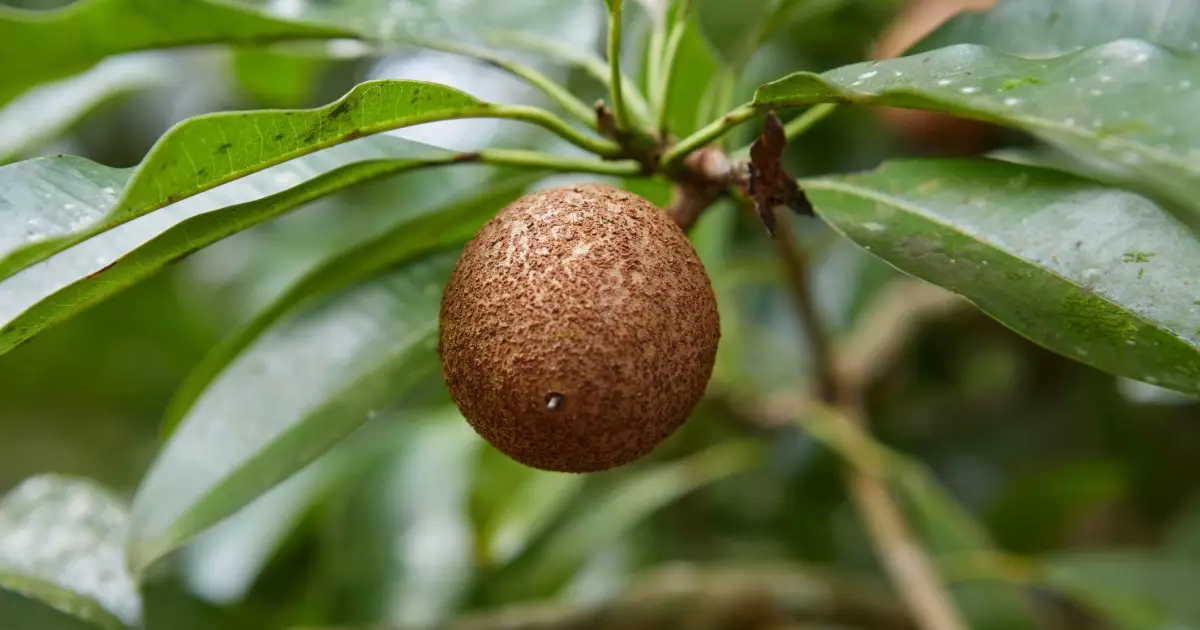Sapodilla, an exotic gem of a fruit native to Central America, has gained some attention as a potential treat for dogs. Commonly referred to as chikoo or sapota, it offers a sweet and fibrous variety that can be appealing for our furry companions. However, pet owners must navigate the waters of its safety and nutritional value with caution. The world of pet nutrition is fraught with mixed information, so understanding how to incorporate new foods into a dog’s diet is crucial.
The Nutritional Value of Sapodilla
One of the most striking aspects of sapodilla is its fiber content. Cooking up to ten times more fiber than traditional fruits is impressive but must be approached with moderation. While dogs can benefit from fiber, too much can lead to potential digestive challenges. The ripened pulp of the sapodilla contains vital vitamins, including A and C, which play an essential role in a dog’s overall health.
However, when compared to other exotic fruits—like the vitamin-packed dragon fruit or the digestive-friendly papaya—sapodilla might not stand out as a powerhouse. Its unique texture, resembling that of a melon, offers a sensory experience for dogs, making it a delightful option. This chewy consistency might intrigue your canine friend, especially if they’re tired of the more conventional fruits like apples or bananas.
Preparation is Key
The safety of sapodilla does not come without strings attached. In fact, proper preparation of this fruit is essential to protect our pets from potential toxins. It’s vital to distinguish sapodilla from mamey—a deceptively similar-looking fruit that can be harmful to dogs. Potential confusion can lead to catastrophic mistakes. Hence, a thorough check with a veterinarian before embarking on any new dietary experiment is a wise course of action.
The sapodilla’s skin and seeds contain saponins, compounds that can be toxic. Therefore, it’s crucial to ensure that all the seeds are meticulously removed before offering any to your dog. This includes not just the large central seed but all parts of the fruit that could pose a risk. Understanding how to identify the ripe fruit is equally important. You can squeeze the sapodilla; a gentle give indicates it’s ready to be consumed. If it’s hard, it’s better to wait until it ripens.
How to Safely Introduce Sapodilla to Your Dog
To introduce sapodilla to your dog’s diet, start small. Offering just a couple of tiny pieces will help gauge their reaction. Every new food comes with an element of risk, including allergic responses. Observing your dog after feeding them a new treat can also provide insight into their body’s tolerance and acceptance of the fruit.
After ensuring your dog has tolerable reactions, you can gradually increase the amount over time, but always ensure that sapodilla is just an occasional treat rather than a staple in their diet. The nature of dietary introductions emphasizes the need for observation and adjustment, ensuring that we keep our pets healthy and happy.
Final Thoughts: A Treat Worth Considering
Incorporating sapodilla into your dog’s diet can be a rewarding experience—both for you and your furry friend. While it may not be the most nutrient-dense option among exotic fruits, the sheer pleasure it can bring to your dog’s palate makes it a fun treat worth considering. Just remember, a little caution goes a long way. With its unique texture and sweet flavor, sapodilla stands as an interesting option that reflects the variety of healthy treats available for our pets. Always prioritize safety and monitor your dog’s response to new additions in their diet, and you’ll find navigating this journey an enjoyable endeavor.

